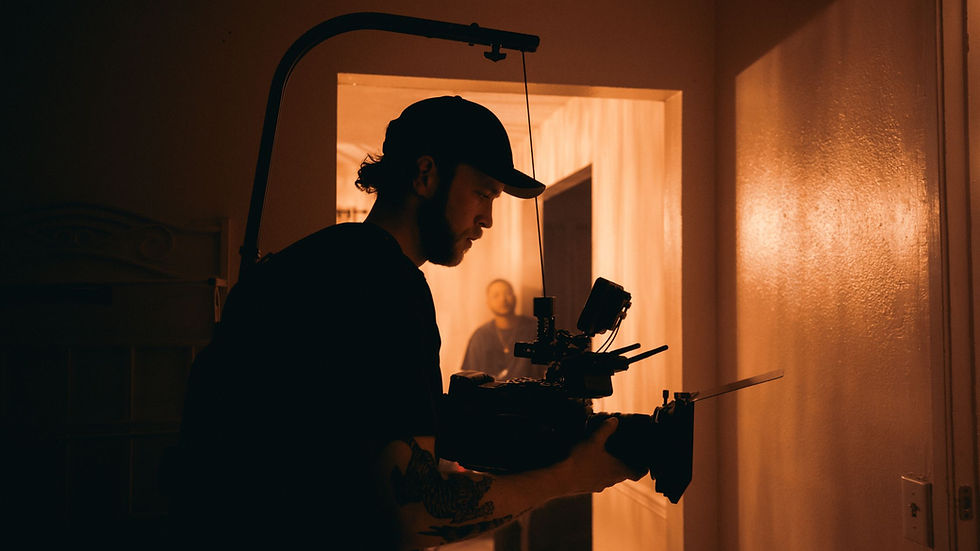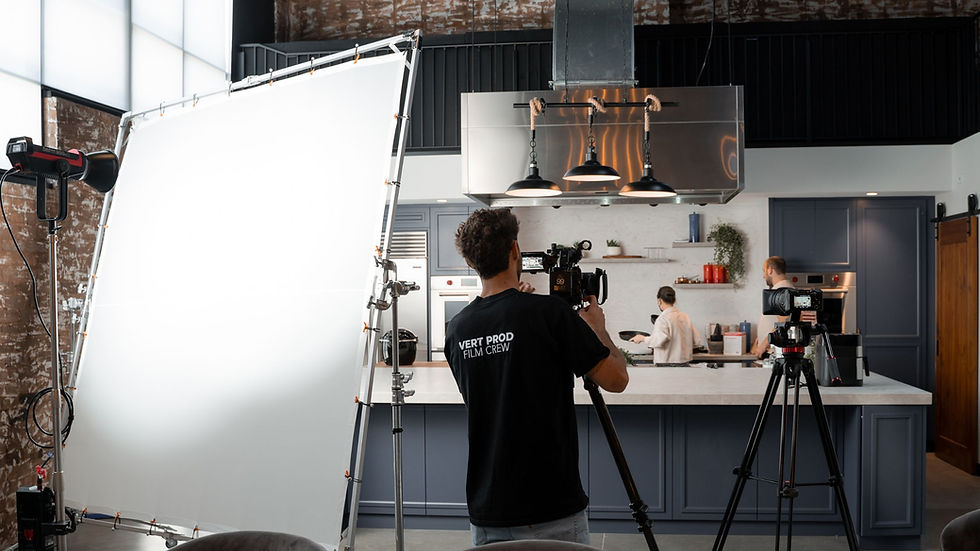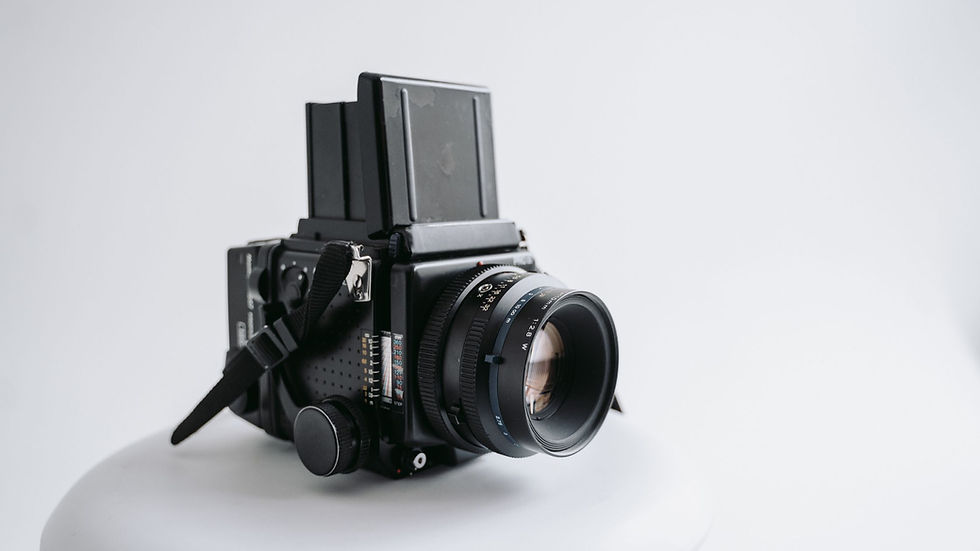What is a Feature Film? A Definitive Guide
- scottservante
- 3 days ago
- 7 min read

Knowing what is a feature film, is key for anyone getting into filmmaking. At Black Hangar Studios, we've been involved with Netflix shows to Disney projects, and we've seen how feature films stack up against other formats. A feature film is a full-length movie that usually lasts 80 to 180 minutes and is the main event in a theatrical release.
Here's a guide that covers everything about making feature films. It'll help you grasp why features are so important in the film industry and how our post production facilities are key to making these big projects happen.
Understanding the Feature Film Definition

What is a feature film, really? The term "feature" actually dates back to cinema's early days. At the time, a feature film was the star of the show, literally the featured attraction that theatre owners would advertise prominently. Think of it this way: in a typical programme, you'd have newsreels and other shorter content. But the feature film was what everyone came to see.
Feature film meaning has changed a lot over time. The Academy of Motion Picture Arts and Sciences says a feature is any film over 40 minutes, but the Screen Actors Guild sets the bar at 60 minutes. In reality, most people in the industry think a commercial feature should be at least 80 minutes long. The different definitions show how cinema is still evolving.
What are feature films in terms of their artistic purpose? Features are designed to tell fuller, more meaningful stories that keep audiences hooked. Unlike shorter formats, they give room for complicated character development and immersive storytelling.
At Black Hangar Studios, we know that compelling stories aren't enough by themselves. They need the right technical setup, too. That's why we've invested in state-of-the-art post production facilities.
The difference between features and other ,- film formats is more than just a technicality. It impacts production budgets and even affects which awards you're eligible for.
The Evolution of Feature Films

Cinema's earliest pioneers kicked off the journey of what is a feature film. The first one to gain recognition was "The Story of the Kelly Gang" back in 1906, a 60-minute Aussie production. It turned out people were willing to sit through longer stories.
D.W. Griffith's groundbreaking 1915 film "The Birth of a Nation" played a major role in shaping the feature film meaning. It proved that audiences were eager for more epic tales, and its impact was clear. They began pouring more resources into creating longer films.
The introduction of sound in "The Jazz Singer" (1927) transformed what are feature films and what they could do creatively. Features could now include dialogue and sound effects, which greatly opened up storytelling.
Colour cinematography has faced its fair share of challenges. Early colour features needed world-class post production facilities. Fast forward to today, and our digital workflows at Black Hangar Studios would be unimaginable to those pioneers.
Feature Film vs Short Film: Key Distinctions

To get whats a feature film, you need to look at how it's different from short films. The main difference is length, but there's more to it.
Structural Differences
Features usually follow a three-act format that evolves over 80-180 minutes, giving lots of room for character growth. Short films, due to their short length, have to zero in on key moments or ideas.
Character Development
Feature film vs short film comparison reveals that features allow audiences to form deeper emotional connections with characters through extended screen time and detailed character arcs. Shorts must rely on efficient characterisation techniques, often presenting characters in medias res without extensive backstory.
Production Considerations
Features need bigger crews and more extensive post production facilities. At Black Hangar Studios, we've noticed feature productions often use our full service range. Short films can often get by with more modest resources.
Budget Implication
Many filmmakers start by making shorts, then move on to features. Damien Chazelle did this with "Whiplash," creating a short to test his idea first. This approach helps creators show what they can do while building connections in the industry.
Technical Aspects: Feature Film Aspect Ratio and
Format Considerations

The feature film aspect ratio plays a big role in how it looks on screen. These days, most films use either 2.39:1 or 1.85:1. Some filmmakers, though, go for 1.90:1 when showing their movies on IMAX screens.
The aspect ratio affects pretty much everything. At Black Hangar Studios, we've got a range of post production facilities set up to handle different formats. Our 2K P3/REC 709 DCI-compliant systems are designed to handle it all. And the BARCO grading suite can handle various aspect ratios.
Feature film aspect ratio often reveal the story's intentions. For instance, Wes Anderson often goes for 4:3 in character-driven films. You need to decide on this early in production, as it affects what lenses to use and how scenes are shot.
Digital cinema has locked down most technical specs, but the feature film aspect ratio is still up to the filmmakers. It's a creative call that affects the whole production.
Feature Film vs Documentary: Understanding the Distinction

Feature film vs documentary is a big split in cinema. Traditional features make up fictional worlds with scripted lines, while documentaries show what's real.
Modern cinema has messed with these boundaries a lot. Documentaries like "Free Solo" and "Won't You Be My Neighbor?" use advanced storytelling methods. The same goes for features like "The Social Network," which turn recent real events into dramas.
What is a feature film gets more complicated in this context. Both documentaries and narrative features can be feature-length and get shown in theatres. The difference often isn't about how they're presented but how they're made. For documentaries, it's usually about capturing real-life footage. Narrative features, on the other hand, involve scripted scenes.
Our post-production facilities work with both documentaries and feature films. Documentaries usually involve a lot of reviewing footage, while feature films have a more set schedule.
What is a Feature Film Example: Analysing Successful Productions

What is a feature film example that showcases the format's potential? Look at "Parasite," "1917," and "Mad Max: Fury Road," for example. Each film takes a unique approach, yet still stays true to the essential elements.
The film "1917" is a prime example. Its single-take feel required a lot of planning and advanced post-production. This level of technical complexity shows why feature films often need custom-built facilities.
Looking at feature film examples, it's clear the format has evolved. Classic films like "Casablanca" (1942) are still engaging. Meanwhile, modern blockbusters like "Mad Max: Fury Road" blend practical and digital effects. So what's the secret to their success? At their core, feature films keep audiences invested for the long haul.
Streamers have changed the game for feature film examples, now including made-for-digital movies. Netflix originals like "The Irishman" are still traditional films but are made mainly for watching at home.
Production Considerations for Feature Films

Whats a feature film production like compared to other formats? A feature film production needs lots of planning upfront and a thorough post-production process. As the budget and scope grow, you need facilities that can handle the nonstop production activity.
Location versus studio filming presents different challenges. With studio filming, we can control the environment and have easy access to post production facilities. That's why Black Hangar Studios is set up as a self-contained hub. We've got a massive 32,000-square-foot stage that can handle big sets. This makes life easier for cast and crew.
Crew needs for features often involve specialised teams. You'll need a script supervisor and a separate post-production team working behind the scenes. We've seen crews of over 200 people come through our doors, all needing someone to provide support.
Technology integration is key; we're talking about merging practical and digital elements. Our green screen cyclorama is set up for just that. To pull it off, filmmakers need post production facilities that can handle complex compositing.
Key Takeaway
Understanding what is a feature film involves a lot more than just how long it is. Features are definitely cinema's biggest storytelling format, from the early silent films like "The Story of the Kelly Gang" to today's streaming productions. They're the ones that push the boundaries of storytelling. And with the rise of streaming, feature films can now reach audiences.
The lines between feature film vs short film and feature film vs documentary are blurring. But some things stay the same: feature films still rely on a strong narrative and technical complexity. To keep up, post-production facilities like Black Hangar Studios have had to get flexible, incorporating new tech and workflows.
Whether you're making your first feature or trying to grasp the format, remember that successful ones need both a great story and the technical know-how. Through our work, we've learnt that what are feature films really about is turning bold ideas into reality. The format of feature films is always changing, but its status in cinema is still secure.
Frequently Asked Questions

What is the minimum length for a feature film?
Film length is a matter of interpretation. The Academy defines it as 40 minutes, while the Screen Actors Guild puts it at 60. However, most agree on 80 minutes.
How long does post-production take for a typical feature film?
Post-production usually takes 3 to 6 months, but some projects can drag on for over a year. At Black Hanger Studios, we've got dedicated workspaces that let us handle a project, and our cloud setup makes it easy for teams to collaborate.
What's the difference between feature films and made-for-TV movies?
Feature films are typically made for the big screen and wide distribution. Made-for-TV movies, on the other hand, are created specifically for TV. These days, though, the lines have gotten pretty blurry.
Do independent features require the same post-production resources as studio films?
Independent features should meet the same technical standards as studio productions. We cater to both, tailoring our approach to each project's requirements. Our competitive pricing is a big plus for independent features, which get the same level of technical quality.
How has streaming changed feature film production and distribution?
Streaming platforms have really shaken things up. Netflix and other platforms are now making great content for watching at home. That's opened up fresh opportunities. At Black Hangar Studios, we've shifted gears to meet the needs of streaming platforms.




Comments